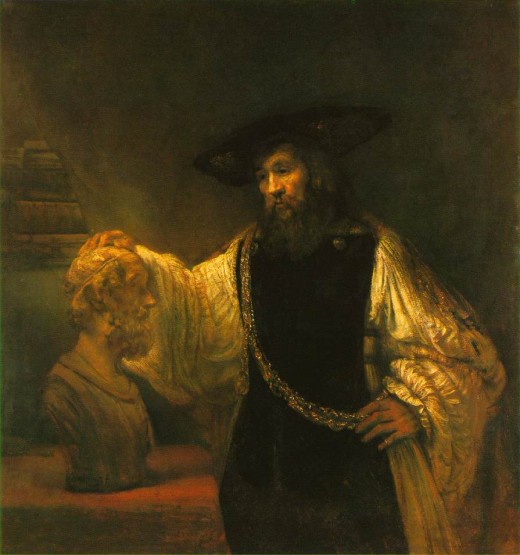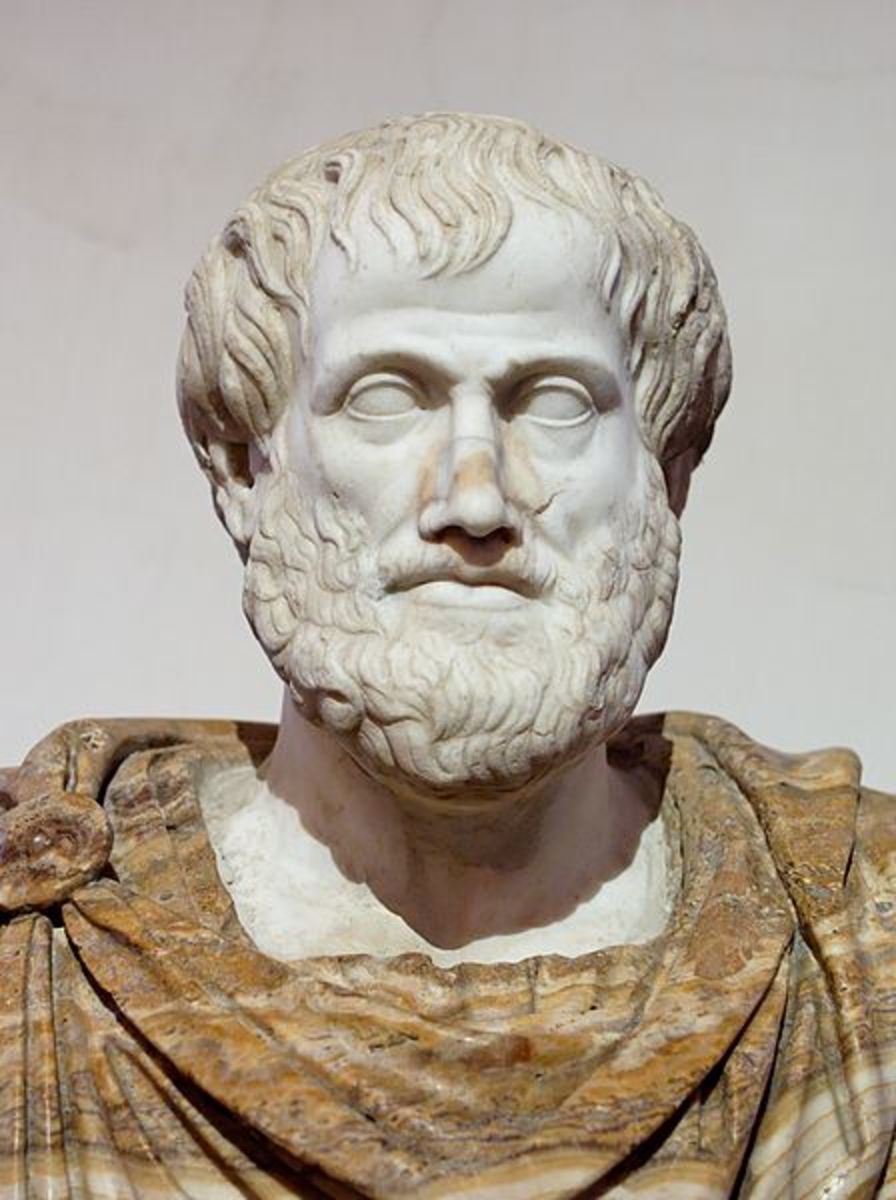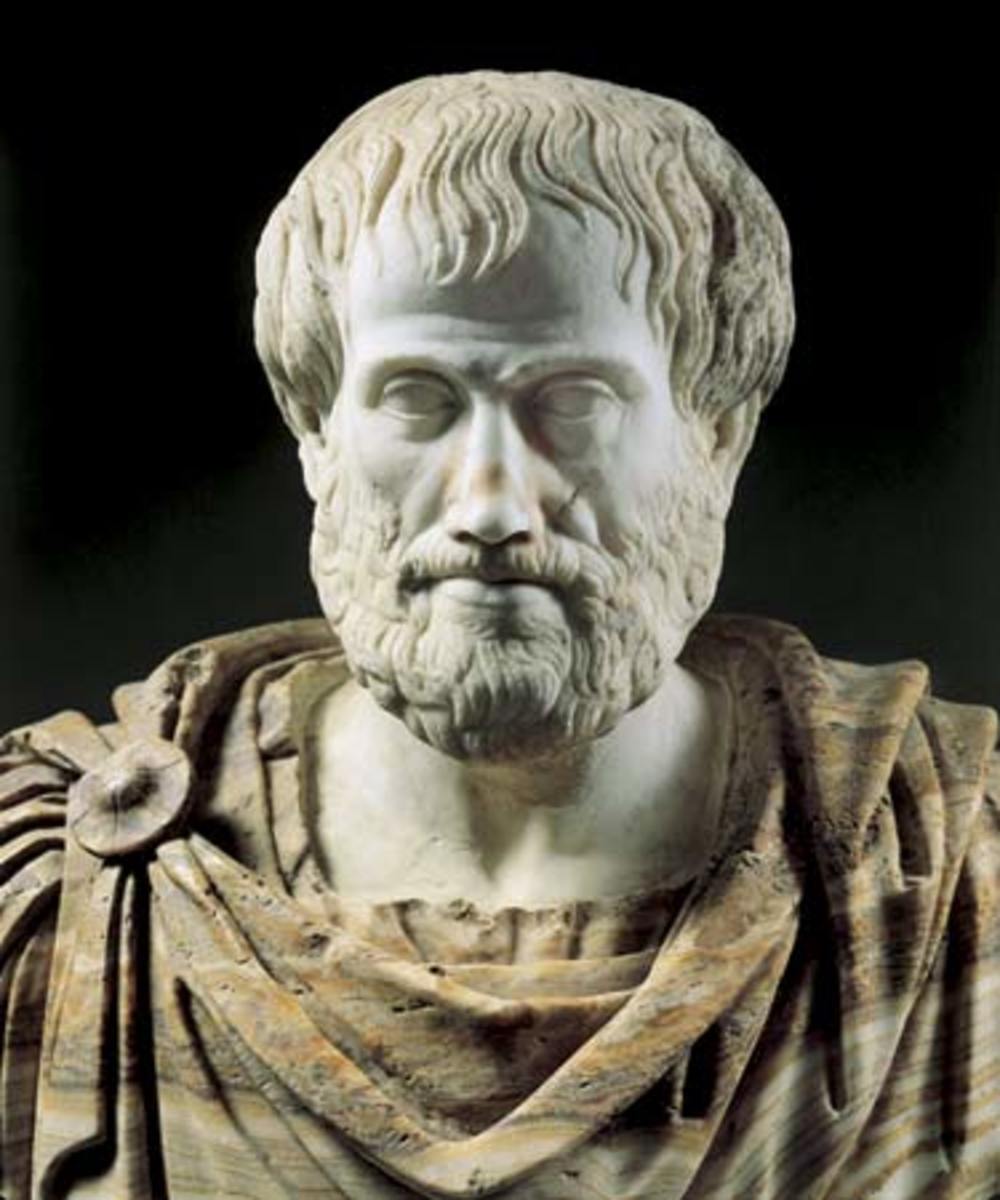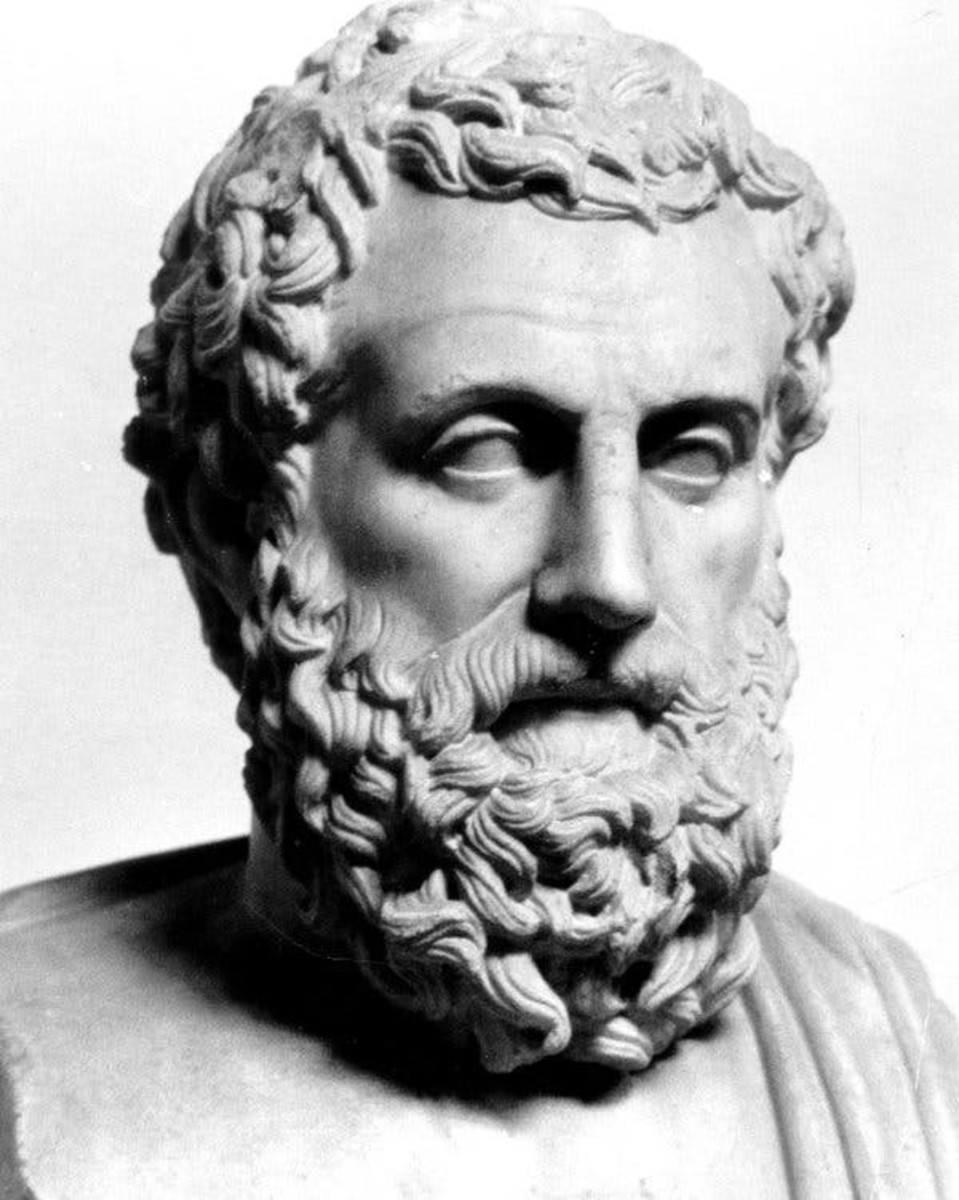Aristotle's Theory of Causality
Aristotle contemplates Homer

Introduction
The Aristotelian theory of causality deals specifically with the issue of how change occurs. It was in Aristotle’s opinion that change occurred through the interaction of four specific causes. In his book of the Physics, he recognises these four causes as follows:
1. The substance of a thing.
2. The subject.
3. The source of motion.
4. The final cause.
In this essay, I will deal specifically with these four causes in relation to the content and material of Aristotle’s Physics. But first, let us look briefly at his Metaphysics.
At the beginning of the Metaphysics, Aristotle states that: ‘All men by nature desire to know.’[1]But though all people desire to know, there are many degrees of knowledge in which Wisdom is to be attained. With this view, Aristotle saw the purpose of metaphysics as Wisdom par excellence, and the lover of Wisdom is one who desires knowledge about the ultimate cause and nature of reality. Therefore, it is initially with Wisdom that an understanding to the first principles and causes of things is attained. Although, this in itself was seen to be the most abstract of the sciences, since it was the furthest removed from sense perception. But in view of this, Aristotle believed it to be the most exact of the sciences. Since it deals with the first principles, he also saw it as the most knowable of the sciences.
It is also important to note that inbeginning to trace the evolution of these four causes, Aristotle began by setting an investigation into the pre-set areas of his predecessors; namely to those of the pre-Socratic era.[2]In doing so, he discovered that some of these philosophers had succeeded in a non-systematical way, in distinguishing two of the four causes, i.e., the material cause and the source of movement.
Causes of Physical Change
At the beginning of the Physics, Aristotle establishes a fundamental principle, that there is a flux present in the whole of creation, which is said to be evident from our sense experience. In the concept of change, he considered this to be a process wherein something in its present state of existence is followed by something different. From here, Aristotle concludes that change simply involves a successive relation between contraries. In other words, a cause is something, which has a positive influence on the being or becoming of something else.[3]In stating the causes that are at work in the nature of things, Aristotle makes it the business of the Physics to learn the causes of physical change. For him, (essential) change was distinct from accidental change. This was due to the fact that when an object experiences change, a transformation occurs within its essential property or Form, i.e., bronze, marble, wood etc. This is what Aristotle called the Formal Cause of the object in change.
The Intrinsic Principles of Cause
In his argument on the intrinsic causes, Aristotle deduces these causes of change by holding this view; that the relationship between the absence and presence of Form cannot happen unless it happens within a persistent substratum that persists throughout the whole transformation process of an object. This is what he called the Material Cause.
In taking this first type of cause (which Aristotle also referred to as ‘cause as matter’), I would like to illustrate this by using the example of a woodcarving. The carving is such-and-such because it is made of wood, and wood is such-and-such because it is hard/soft, heavy/light, smooth/rough, bright/dark etc. In stating that the carving is made of wood, I therefore express the cause of the carving’s being, and because wood is the constituent stuff of the carving, the cause therefore, is the ‘material’ cause. In this material cause, otherwise known as ‘Matter’, Aristotle states that matter is a certain kind of thing, and not only has a tendency to form, but also consists of something ultimate and eternal: ‘matter is something relative to something, for the matter varies with the form.’[4]
In view of the second cause, which is normally referred to by Aristotle as the‘formal’ cause, he defines this cause as that of which in virtue of which something is, what it is. In referring to the previous illustration of the woodcarving, I now ask this question: What is it that constitutes the woodcarving? This indeed would be in relation to that of which the nature of the carving represents itself, i.e., its shape. Since the influence of the design affects the action of the woodcarver, it does not intrinsically enter into that which constitutes the wood. However, the skill of the woodcarver is enshrined in the wood, which mirrors the perfection of the idea that was initially in the mind of the woodcarver. This in return gave specification to the woodcarver’s productive effort, and thus, the production is modelled upon it.
The Extrinsic Principles of Cause
Having looked at the two intrinsic principles of change, the Material and the Formal Cause, I would now like to look at the further two principles that are extrinsic to the transforming object: the ‘Efficient’ and the ‘Final’ cause. Before I discuss these extrinsic principles, I would like to note that it issolely through the Material Cause that the Efficient Cause is constituted. This is due to the fact that Aristotle held the view that Form is grounded on a persistent substratum or Matter. This is what he called the ‘Material Cause’. Let us now look at these two causes in greater detail.
Otherwise known as the ‘Efficient’ cause, Aristotle holds that efficient causes do not precede their effects, e.g., the carving does not precede the wood. Once again, in referring to the illustration of the woodcarving, I now pose this question: What has caused the wood (which was initially a tree), to now take the form of a carving? This now leads to the subject of causation: the woodcarver. The woodcarver removes a certain amount of the residue wood, by carving and shaping the wood material using certain cutting tools on the surface of the wood. This therefore, gives a designed form to the wood material.
Moving on now to the ‘Final’ cause, which was more commonly referred to by Aristotle as ‘the goal’ (telos). The goal of the woodcarver is to transform the material (the wood) into the form (that of which it represents). Thus the woodcarver is the efficient cause of the first and second causes, which are in return, solely for the purpose by which the woodcarving is to serve. This ‘Final’ cause in itself is that which normally follows its effects.
Having now looked at the two extrinsic principles of change, the Efficient and the Final Cause, Aristotle would infer that it is through the Efficient Cause that change actually happens. Later on, he states that the Efficient Cause often identifies itself with the Formal Cause and the Final Cause. He also infers that the principle of the Final Cause does not imply a conscious or deliberate tendency to its purpose. More so, the tendency is established on the basis of a natural law. If the principle of the Final Cause is intentional then there is a conscious and deliberate tendency to its purpose. An example of this could be that of the oak sapling, which grows into a mighty oak. This happens because it has a tendency to grow in that way. The end, which it is intended for, determines the action of the agent because it is an object of inclination.This therefore finalises the activity of the agent.[5]
Conclusion
To conclude, change is the interaction of the aforementioned four causes. If I take this essay as a quick example of this, I would begin by saying that in the initial stages of this essay a change occurred. The Material cause is the paper and pen, while the Formal Cause is the very essence of which I am giving it. The Efficient Cause is me, because I am writing it, and the Final Cause is solely the purpose for which it is being written: to study Aristotle’s theory of causality.
[1] All references to Aristotle’s ‘Metaphysics’ and ‘Physics,’are taken from: A New Aristotle Reader, Ed., J. L Ackrill, (Oxford University Press, 1987) Meta., 1A, 980a.
[2] Thales, Anaximander and Anaximenes focused on the material causes, and in doing so, based their theories solely on one principle cause.
[3] Martin O. Vaske, S.J., An Introduction to Metaphysics, (Creighton University, Omaha Nebraska 1963.) p. 154.
[4] Physics, 194b 9.
[5] Martin O. Vaske, S.J., An Introduction to Metaphysics. p.138.
© Niall Markey 2010








